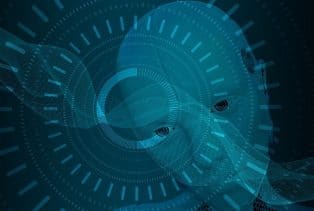European Schoolnet set the basis for integrated STEM projects: STEAM IT
This publication provides a theoretical basis for the launch of a number of integrated STEM education trials in Europe. As well as being a literature review, the authors conducted a SWOT (Strengths, Weaknesses, Opportunities and Threats) analysis on industry, primary teaching, secondary teaching, and various European education ministries.
Integrated STEM teaching is considered to be an inter-disciplinary approach to solving real world problems using the fields of science, technology, engineering and mathematics. The main findings from the SWOT analysis were:
Industry
Strengths: The literature identifies that industry has highlighted the importance of STEM in education.
Weaknesses: In certain countries the importance has not been communicated clearly.
Opportunities: Increasing number of STEM career opportunities.
Threats: Economic growth could be adversely affected if STEM is not prioritised in education.
Primary Teaching
Strengths: Communication between teachers has been identified as a strength.
Weaknesses: A lack of clarity as to the definition of integrated STEM teaching.
Opportunities: Each curriculum area presents opportunities which can be combined.
Threats: Resources need to be effective to ensure teachers can deliver integrated STEM effectively.
Secondary Teaching
Strengths: Collaboration between teachers is considered a strength.
Weaknesses: Insufficient subject knowledge has been identified, as well as challenges related to planning time and lack of motivation.
Opportunities: Professional development courses help staff deliver integrated STEM more effectively.
Threats: Issues related to cost and pressure on time have been identified in the literature.
Education Ministries
Strengths: Some countries have prioritised STEM.
Weaknesses: There are discrepancies between different subject areas in terms of content and coverage.
Opportunities: Topics such as robotics and climate change provide example problem domains that can be used as the basis for projects.
Threats: Certain aspects are difficult to include in school projects, such as solids or revolution.
Teams selected to participate in STEM projects
Key criteria for projects
Challenges need to be real
Pupils need to be able to relate to the problems
Challenges should be achievable
Alternative approaches should be available to obtain a solution
A multidisciplinary process should be used
Standards should be used in mathematics and science
Students should be involved in the process of selecting the challenges
Methodology
For the literature review a database search was performed using the keyword ‘Integrated STEM’.
A SWOT (Strengths, weaknesses opportunities and threats) template was used for considering how to introduce projects in primary and secondary schools.
You can read more about the STEAM IT project here: http://steamit.eun.org/about-the-project/our-objectives/
RECOMMENDED: https://global-edtech.com/category/report/
“ Eleven teams consisting of three teachers each, have been selected in order to participate in the STE(A)M IT project. Each team is expected to create a Learning Scenario based on the STE(A)M IT approach. The Learning Scenarios will be tested in other schools and updated based on the feedback received by teachers and students. They will then be used in two online courses for teachers, as good examples, that will be launched in October 2020. ” Tasiopoulou et al. (2020). STE(A)M IT Integrated STEM teaching State of Play, June 2020, European Schoolnet, Brussels














